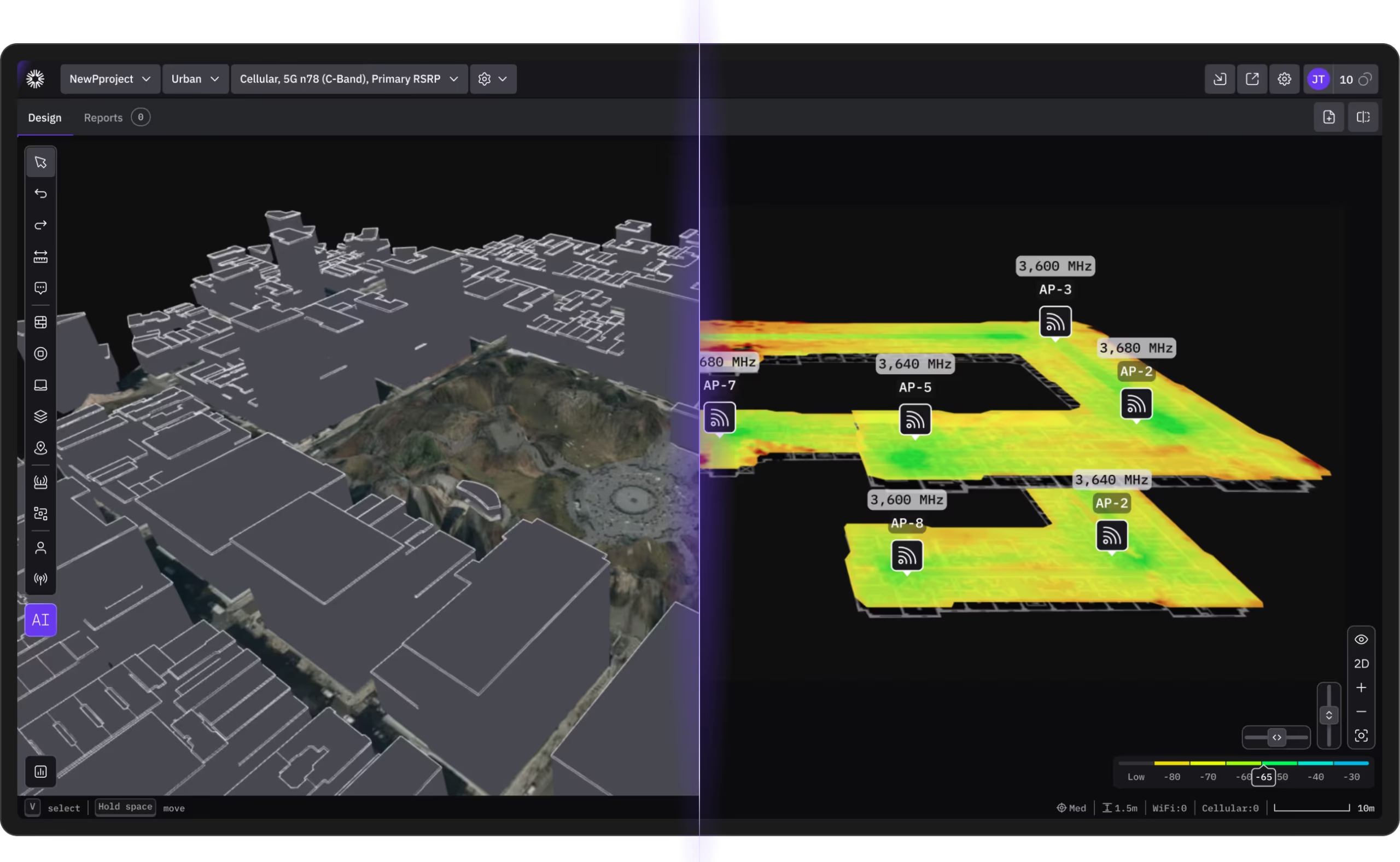Introduction
Managing reliable in‐building coverage across multiple structures presents unique challenges—especially when you’re using EINO (Edge Intelligence Network Orchestration) to optimize throughput, latency, and roaming. In this post, we’ll take you behind the scenes of our latest multi-building deployment, covering:
-
What EINO brings to DAS
-
Project scope and building layout
-
Key architectural decisions
-
Performance metrics and user experience
-
Lessons learned & future enhancements
1. What EINO Brings to DAS
Edge Intelligence Network Orchestration (EINO) provides real-time AI-driven control over RF parameters, enabling:
-
Dynamic load balancing between buildings
-
Adaptive beam steering on Massive MIMO panels
-
Predictive fault detection before coverage dips
-
Automated handoffs for users moving across campus

2. Project Scope & Building Layout
We served four adjacent buildings—two office towers and two research labs—totaling 1.2 million square feet:
| Building | Floors | Primary Use | Antenna Count |
|---|---|---|---|
| Tower A | 15 | Corporate HQ | 45 |
| Tower B | 12 | R&D Offices | 36 |
| Lab Complex A | 5 | Clean Rooms | 20 |
| Lab Complex B | 7 | Test Labs | 28 |
3. Key Architectural Decisions
-
Distributed Head-Ends
– Deployed one head-end per building with local processing.
– Each head-end links to the EINO controller via redundant fiber. -
Inter-Building Fiber Rings
– Dual-strand rings ensure sub-5 ms sync for URLLC traffic.
– Protected against single-point failures with automatic rerouting. -
Antenna Selection
– Ceiling-mounted massive MIMO panels in office floors.
– Wall-mounted beamforming units in lab corridors to avoid interference. -
Power & Cooling
– Centralized UPS in each head-end closet.
– Intelligent CRAC units that report temperature anomalies to EINO.
4. Performance Metrics & User Experience
| Metric | Before Upgrade | After Upgrade |
|---|---|---|
| Average Throughput per User | 150 Mbps | 950 Mbps |
| Campus-wide Coverage (%) | 87 % | 99.6 % |
| Call Setup Success Rate (CSSR) | 93 % | 99.2 % |
| Average Handover Time (ms) | 120 ms | 25 ms |
5. Lessons Learned & Future Enhancements
-
Proactive Fiber Monitoring: Early detection of minor fiber bends prevented potential outages.
-
Granular RF Analytics: Collecting per-antenna KPI data helped pinpoint performance dips in Lab B.
-
User Feedback Loop: A campus-wide survey identified intermittent handoff issues, leading to EINO algorithm tweaks.
Next on the roadmap:
-
Integrate private LTE slices for enterprise IoT devices.
-
Extend EINO orchestration to campus-wide Wi-Fi networks.
-
Pilot mmWave small-cell integration in testing zones.
Ready to see EINO in action?
Get in touch with DAS Telecom Solutions for a custom multi-building DAS assessment and unlock the full power of AI-driven coverage.

Leave a Reply